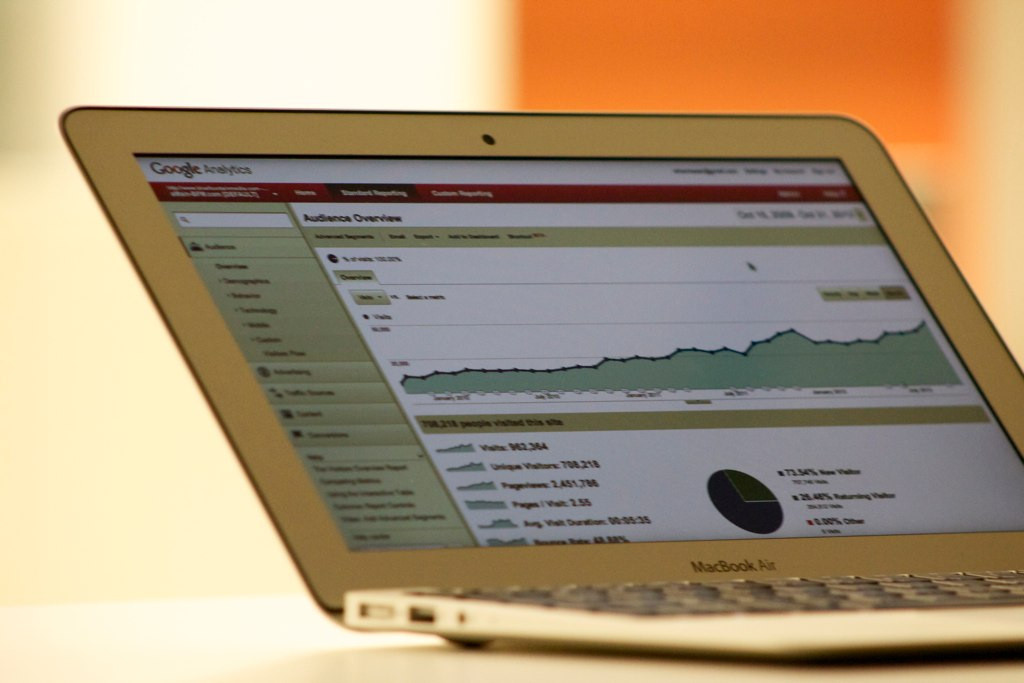
Analytics can be a powerful tool, that when used correctly, give a business a competitive edge in a global economy that is dynamic. When used incorrectly, they can doom a business to failure, or be an expensive tool that yields no real benefits.
If analytics are part of your role within a business, you need to know the following information to get more out of your predictive business tools and processes.
Knowledge is actually power
Many companies know of correlations. For example, on a rainy day, umbrellas and some food items sell much better than on sunny days. This can be lead to better merchandising for retail firms, but is knowing that a correlation exists enough?
There is no doubt it has value for business, merely relying on correlation alone can entail risk, and it may limit broader actions that could further improve sales. You can never have enough knowledge. So do not be satisfied in knowing the obvious, the tendency of people to buy umbrellas on a rainy day is simple enough to understand, but to get at the information and rationale behind why certain foods sell better on rainy days will take some more work.
Scientific evidence is proof
If anything, a look back in our past tells us even the best and brightest among us can be wrong. Even Einstein once wrongly concluded the universe was not expanding. The best example in the business world was the launch of New Coke in 1985. Extensive market research with taste tests given to over 200,000 people indicated they preferred the taste of New Coke to the old one. Surely over 200,000 people cannot be wrong?
This was a very critical mistake as the higher-ups at Coca-Cola did not recognize that brand heritage was every bit as important as taste. The public turned their nose up to the new formula, and Coke reintroduced Classic Coke to a welcoming market. It still sells to this day while New Coke fell by the wayside a couple of decades ago.
Random samples ensure representation
A true random sample is something most statisticians will tell you is very hard to achieve. There are a large number of factors that make humans biased, and that can skew the real results of a survey. Things are just not how they appear more often than you might think.
To get a true random sample involves more than just putting a survey up on your web site. It takes a statistician with an advanced degree to help set up a true random sample, and then there is still a margin of error involved.
Most people are rational beings
Humans make irrational decisions on a daily basis. As consumers, humans will stick with brands we are familiar with, even if another option is clearly superior. We also use decoy options to buy products based on subliminal decisions, most notably buying a larger size of something because it promises to give you some for free. We can also get a great deal of satisfaction by paying more for something for nothing more than perceived value, when another item is the same for a lesser price.
All of these are somewhat irrational behaviors, and analytics have a hard time crunching numbers such as these.
Correlation is an accurate measurement of the strength of relationships
Humans have a tendency to try and connect two variables via correlation, and sometimes it holds true, and sometimes it doesn’t. You can draw a correlation between health care spending in the United States that increased seven fold between 1960 and 2010. During this time, deaths from heart disease fell by more than one-half. It is not out of the question to draw a strong correlation between those two variables.
Not so fast though. There are also other variables in play that most likely had a large part in this. This was also a time when people became more mindful of the role a balanced and healthy diet can play in their life, and exercise became in vogue as it never had before.
It’s also easy to be a devil’s advocate on this correlation. In that same time, some chronic health conditions, such as diabetes, actually became more widespread. Things are not quite as easy to connect as one might think.
That which cannot be measured, cannot be managed
It has been said by more than one advertising executive that they know at least one-half of their ads are not working, they are just not sure which half it is. Uncertainty in advertising is something that will likely never go away. It is inherently difficult to measure what stimulus triggers what response. But this is no way means at attempt should not be made.
In time, the software used in these types of analysis are becoming better and better. You just have to make sure you feed it good data.
Recall is actually a trusted form of memory
Humans have a tendency to forget, and more than you might think. Research has shown time and again that people will recall simple images and descriptions a little more than one-half of the time. Research on what people recall from ad campaigns show a little better recall, with people remembering the general context of a message more accurately than any specific details.
Metrics differ for sales and marketing
Both sales and marketing arms of a business share a single goal – to drive growth through profits. It would be reasonable to assume they would use the same metrics to track performance, but often, they do not as sales teams focus on leads and closing sales while marketing has a focus on the brand, and determining how effective ad campaigns are in the long and short run.
To align the metrics of these two departments, experts suggest three groups of measures including outcome profitability, end-to-end conversions, and revenue diversity. These are the most accurate for determining what is working, and what is not.
Good decision making is driven by sound metrics
Surveys done on employees at many top companies reveal that decision making is done by balancing judgment, along with analysis. Collecting and analyzing data is expensive, and is no guarantee they will be used properly in decision making. Many people just trust their gut instincts more than they trust the numbers.
Great insights work to sell themselves
Great research projects and top-notch business intelligence systems can only go so far in leading to positive changes, and winning people over for what they do for a business. But the facts are most projects fail in reaching their goals. Mistakes in operations, poor problem definitions, and more are just some of the most common reasons behind project failure.
Even with a clearly defined goal and objectives, a project can still fail due to poor communications and a lack of involvement by those who have a stake in the success of the project.
More Myths About Analytics Predictive Metrics
More and more businesses these days are trying to gain a competitive edge using predictive analytics, but few are successful these days. This is due in part to falling for many long-standing myths about them. Here are some of the more common ones you need to know about.
Predictive analysis is simple
Sure, it is easy to mine big data and draw analysis from it. Getting analytic programs to work and spit out data is easy. Doing it the right way is much more difficult. Doing predictive analysis right takes some training in consumer behavior as related to marketing, and without that, results tend to be wildly inaccurate.
Predictions are always right
Never think that anything in business is static. Things are always changing. As time passes, new data should be inserted into predictive models to get better projections as to the future. There are a number of variables such as demographic changes, cultural shifts, and more, that can change your model in ways you never saw coming.
Predictions are perfection
Predictive analytic produce outcomes which are probable. No one has the power to predict the future in an extremely accurate manner. If they did, no one would have a real job as people would spend all of their time picking winners at the race track or on Wall Street. Long shots come in every now and again, and those are tough to predict in business and in the races.
You must have a professional consultant to implement predictive analytics
You should first do some predictive analysis on your own, with your own data, and see what the results are before you take the expensive step of bringing in a consultant. One of the problems is finding a consultant that knows enough about your business to help. This is one area where it might be to your advantage to train employees, or hire an outsider familiar with your business to do predictive analysis.
If you are still not getting the results you want and need, then you may want to consider bringing in an outside consultant.
Predictive analysis metrics cost too much
Technology breakthroughs such as cloud storage and new software have made it affordable enough that even small businesses can make use of it.
Predictive analytic is a machine problem for the most part
Predictive analytic is a not a magic black box by any means. You cannot just add data and expect some accurate results to pour out some time later. It just does not work like that. You need the ability to validate results before these projections are used for any company planning.
Insights are equal to action
This is perhaps the biggest of all myths surrounding predictive analysis metrics. The process itself is done to gain insights on the business world around you. In order to put those insights into action, it takes a great deal of managerial skill and experience. You also need backing from stakeholders within the organization to make it work.
These are not the only myths surrounding analytics by any means. Analytic results can be skewed by bias, on the part of the one doing the research, or the subject. You must guard against this in order to get accurate results.
Conclusions and Insights on Analytics
Just because there are so many myths surrounding analytics and their use does not mean they are not important for a business, in fact, they are more important than ever. Today, new data sources and improved diagnostic capabilities have the ability to enhance the value through careful analysis. But in order to make an impact and get action on the trends you see developing through analytics, you will need stakeholder engagement, support from upper management, and commitment to any projects looking to capitalize on future trends that have been projected.
Analytics will continue to play a large part in businesses of all sizes, and their role in the future can only be expected to grow. Just be careful with what you put in the equation, and the results you get out of the analytics black box.
About The Author
Khalid Essam
Khalid is the Chief of Staff at AOK. He collaborates with a team of specialists to develop and implement successful digital campaigns, ensuring strategic alignment and optimal results. With strong leadership skills and a passion for innovation, Khalid drives AOK’s success by staying ahead of industry trends and fostering strong client and team relationships.




